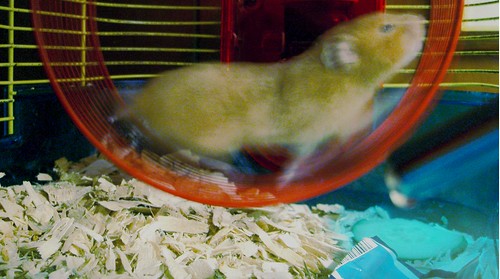 |
| Photo by Smartworks Coworking on Unsplash |
In comparisons between online and in-person communication we tend to assume that the in-person meeting is always best and that the online version is a limited substitute. After a year and a half of restrictions and lockdowns there is an understandable desire to get back to normal again and as a result that notion of normal gets idealised. Classroom interaction and in-person meetings are presented in glowing terms whilst online versions are often questioned. However, if you look back honestly you remember how so many in-person meetings and classes were extremely uninspiring and ineffective.
Online and in-person meetings provide different frameworks and affordances, but the success of these meetings is dependent on the planning and communication skills of the teachers/managers and participants. Being there in person is no guarantee of good communication. This is the gist of an excellent article by Elizabeth Stokoe and colleagues, Is communicating in person the “gold standard”? You’re asking the wrong question.
Communicating in person can also be highly unsatisfactory. We have all been in a terrible meeting, poor medical consultation, or a dire first date. Numerous books, articles and courses are dedicated to how to chair, participate in, and lead, an effective in-person meeting. Why? A meeting can ‘stink’ not because technology makes it hard for us to communicate, but because people are not trained in how to lead or participate in one — or are just poor communicators. Being co-present does not equate to or guarantee quality, inclusion, equality, satisfaction, productivity, interaction, engagement, or connection.
One of the most common complaints about online meetings is that we cannot see each other's body language but the article questions whether this is such a crucial factor. The body language argument has become a communication myth that has spread over the years thanks to misinterpretation and wishful thinking. Body language is a factor but not as major as we assume. In most physical meetings we all sit behind desks and can only see each other from the waist up, very similar to the view we get in online meetings. Of course we can make eye contact with each other in a way that is almost impossible in online meetings, but on the other hand online meetings compensate by using chat messages, emojis etc. Hybrid meetings are especially problematic since we are mixing the two modes and the risk of missing essential communication is high. There are differences between the modes but we are very resourceful in making the most of what is available. We have been using voice communication and radio for over a century and still do, despite the complete lack of body language.
It's not about the mode of communication but the skills of those using it. The key takeaway is this:
Good communication depends not on the modality or technology but on the communication skills of the people using it. We noted earlier that being in person is no guarantee of a high-quality interaction. Communication succeeds when everyone knows why they are talking and where there is parity of opportunity to participate.Another issue is the language used to describe in-person meetings and work. An article by Joshua Kim in Inside Higher Ed, Stop Using the Language of “Normal” for Face-to-Face Academic Work, questions the use of the word normal. What we consider normal work or education does not suit everyone and never has. Many people accepted it because there was no choice, but now that we have seen that many tasks can be performed as well if not better online then there are strong arguments against forcing a return to the office or campus. The rituals of office life need to be questioned and a more flexible approach is needed. Less commuting benefits the environment and the opportunity for more home working can increase productivity and efficiency. Physical presence does not always guarantee focused activity. Normality is in the eye of the beholder.
What needs to change is the language around work.
Let us all try to remember that what feels “normal” to many (especially many leaders) is particularly challenging for some.
Let us not devalue the lived experience of our colleagues who are more productive and happier when working from home.
And in recognition that “normal” means different things for different people, let us strive to listen to what many of our colleagues are telling us about where and how they wish to work.
Instead of going back to normal we need to move forward to something different. The climate, environment and society depends on it.



